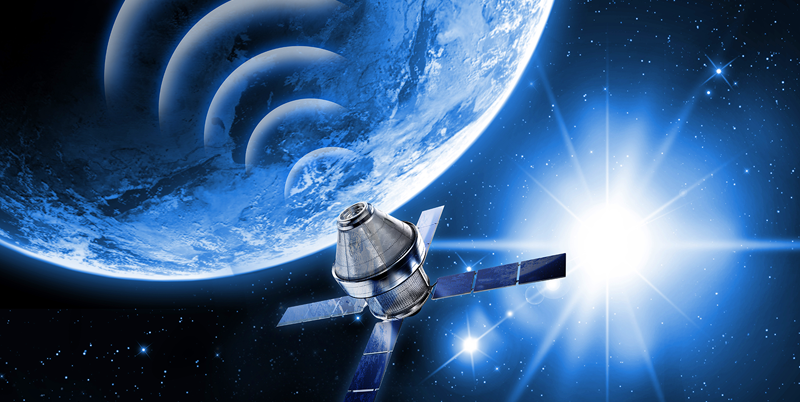
The Space Domain Task Force's mission is to foster the emergence of cost effective, timely, commercially available, and interoperable space, satellite, and ground system domain software components through technology and standards.
We promote open industry standards that apply to the space industry by providing a collaborative environment to:
- Identify gaps where standardization is needed.
- Develop new standards or adapt existing ones.
- Evolve specifications to reflect changes in the industry.
- Encourage the use of standards.
To satisfy this mission the Space Domain Task Force will:
- Identify relevant standards, architectures, research, and technologies in space applications.
- Issue RFIs, RFPs and RFCs to identify potential standardization relevant to space.
- Use the Object Management Group (OMG) technology adoption process to standardize interfaces for software components, services, and frameworks in space applications.
- Utilize architectural models to describe distributed systems in a standard way.
- Create and maintain a Space Architecture and Roadmap for the Space Industry worldwide.
- Utilize existing OMG specifications.
- Involve all interested members of the OMG in the OMG Space Task Force.
- Assist and advise the Liaison Sub-Committee regarding its relationship with related Standards Organizations and Consortia.
- Participate and Present in other space industry consortia to encourage further OMG participation.
Notable Deliverables:
- Ground Data Delivery Interface (GDDI) RFP: Space vehicle operations require varying compositions of ground applications that are integrated together within a common network (WAN and/or LAN) to provide an end-to-end ground system capability. This includes real time data and metadata transfer across these applications. Typical data includes spacecraft bus commands, telemetry, and mission payload in digital/baseband form. Metadata is carried in-band with the data and includes parameterized information and real-time status used by the ground applications to properly process, store, retrieve, and deliver the data. No common model for this dynamic data/metadata interface currently exists. Approaches, designs, and custom protocols vary widely from one vendor to another offering little opportunity for reuse to system integrators. The result is often a costly and time-consuming integration effort. This RFP solicits proposals for the following: 1) A Platform-Independent Model describing a lightweight application-level message interface that encapsulates spacecraft data and metadata so they can be transferred between ground applications within a common network. 2) At least one Platform-Specific Model describing the encoding format of the metadata and data encapsulated by this interface. This platform specific model will call out at least one standard transport layer for carrying the encapsulated/encoded metadata and data, with the intent of reusing an existing transport that provides high throughput, low latency, and optionally secure transmission.
- Command & Control Message Specification (C2MS): Establishes format specifications to allow for common data exchange interfaces for integrating satellite mission ground data system products from multiple vendors and system developers. The formats may be of benefit for system-internal interface definitions and for communications between systems.
- CubeSat System Reference Model Profile (CSRM): Defines the necessary stereotypes (extends SysML) for logical CubeSat space-ground architectures, which is intended to promote consistency and interoperability of logical CubeSat space/ground architectures models.
- Ground Equipment Monitoring Service (GEMS): Defines a lightweight and intuitive interface model suitable for control and status of nearly all types of devices within space related ground systems.
- Satellite Operation Language Metamodel (SOLM): Defines a metamodel to represent spacecraft operations procedures, which contain sequences of instructions to conduct spacecraft operations (typically, spacecraft commands and telemetry comparisons). These procedures may also include the configuration of ground equipment, configuration of spacecraft test equipment, execution of ground testing, and execution of in-orbit testing.
- XML Telemetric & Command Exchange (XTCE): Addresses the need for a standardized information model capable of supporting Telemetry/Telecommand (TM/TC) definitions across the widest possible range of space domain activities. The goal is to allow TM/TC definitions to be exchanged between different organizations and systems, often at the boundaries of mission phases, without the need for customized import/export, re-validation, or even re-implementation of mission databases.
- XTCE US Government Satellite Conformance Profile (XUSP): Addresses the need for a subset of XTCE 1.1 called GovSat for United States (U.S.) missions that are CCSDS compliant.
Work in Progress:
Get Involved:
If you're an OMG member, have a member account, and want to get involved, you can Subscribe to The Space DTF Mailing List to receive frequent group email updates and/or contact [email protected]. If you don't know if your organization is already a member, check the OMG Member List, Request An Account, and follow the prior steps, if your organization is a member, to get engaged. If not a member and interested in getting involved please visit our Membership Overview Webpage and/or contact [email protected].